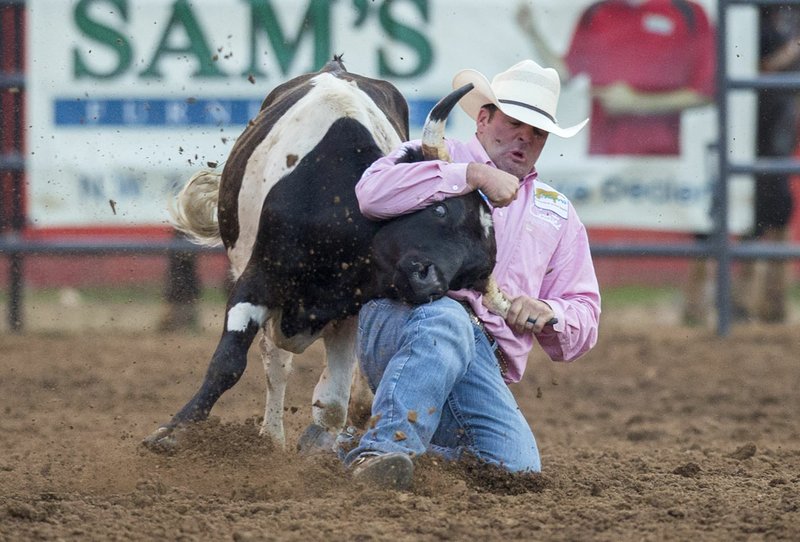Google rodeo terminology and check out the "people also ask" suggested questions:
Why are rodeo bulls so angry?
What is the slack at a rodeo?
What's a pickup man?
Not even English, right?
But the answers to most of these questions can be easily found on the Professional Rodeo Cowboys Association website, prorodeo.com. The PRCA, for those new to the term, is the largest American rodeo organization in the world. As of 2018, It sanctions rodeos in the United States, Canada, Mexico and Brazil, with its championship event National Finals Rodeo.
It's a lot more fun, though, to take the list of terms -- and your friends -- and head out to the Rodeo of the Ozarks to learn about a sport uniquely rooted in the American West. Start here:
Barrelman -- An entertainer who uses a barrel to distract a bull after a ride, and sometimes to protect the cowboy.
Bulldogger -- A steer wrestler.
Bullfighter -- An athlete who protects the bull rider after he dismounts or is bucked off by distracting the bull and directing its attention to the exit gate, sometimes stepping between the bull and the bull rider.
Box -- In a timed event, the area a horse and rider back into before they make a roping or steer wrestling run.
Bronc Rein -- A saddle bronc rider holds onto a bronc rein at a specific position that he determines based on the size and bucking habits of the horse he's about to ride; bronc riders often give each other advice about the length of rein a specific horse will perform best with: "Give him 3½ fingers."
Chute -- A pen that holds an animal safely in position.
Flags -- Because rodeo's timed events are measured in tenths of seconds, judges in the arena drop flags to signal the timers to stop the clocks.
Flankman -- A cowboy or cowgirl who works in the bucking chutes, adjusting the flank strap around the animal before the ride; the best flankmen and women are familiar with each individual animal and know exactly how much flank to give each animal to encourage optimal bucking.
Flank Strap -- A soft sheepskin- or Neoprene-lined strap placed in the area where a human's belt would go, it encourages the animal to kick out behind itself rather than rear up, which provides a safer, showier ride. (And explains why bulls are so angry!)
Header/Heeler -- The two partners in team roping: The header throws the first rope, over the animal's head or horns, and the heeler throws the second rope to catch both the steer's hind legs; roping one leg results in a five-second penalty.
Left (or Right) Delivery -- Many bucking animals prefer to stand in the chute facing a particular direction, so they can leave the chute in the direction they prefer.
Mark Out -- In the bareback and saddle bronc riding, a cowboy's feet must be above the point of the horse's shoulders when the horse's front feet hit the ground -- if so, he "marked the horse out," but if not, he "missed him out" and the ride is disqualified.
Pickup Men -- Two mounted cowboys who help riders dismount, release a bucking horse's soft flank strap, and escort bucking horses and bulls to the exit gate after a ride.
Reride -- If a cowboy's score is affected by equipment failure or a horse or bull that doesn't buck to performance specifications, the judges may offer the cowboy a clean-slate chance on a different horse or bull.
Riggin' -- A suitcase-style handhold customized to a rider's grip and attached to a molded piece of leather that is cinched, with a pad, around the horse's girth.
Roughstock -- The bucking horses and bulls used in bareback riding, saddle bronc riding and bull riding, usually bred and raised for the job.
Slack -- Excess entries at some rodeos may be scheduled for preliminary (slack) competition, usually before the rodeo opens to the public.
Try -- A noun used for both cowboys and livestock, denoting grit, determination, fitness, stamina and resilience: "Give that cowboy a hand -- he had a lot of try."
NAN What's Up on 06/24/2018

